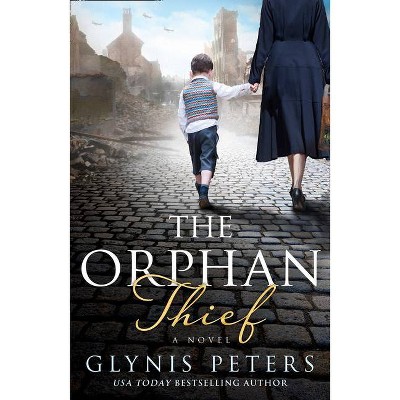Orphan Texts - by Laura Peters (Paperback)

Similar Products
Products of same category from the store
AllProduct info
<p/><br></br><p><b> About the Book </b></p></br></br>In one of the first studies of its kind, Orphan texts seeks to insert the orphan into the larger critical areas of the family and childhood in Victorian culture. Laura Peters considers canonical texts alongside lesser known works from popular culture in order to establish the context in which discourses of orphanhood operated.<p/><br></br><p><b> Book Synopsis </b></p></br></br>In one of the first studies of its kind, Orphan texts seeks to insert the orphan, and the problems its existence poses, in the larger critical areas of the family and childhood in Victorian culture. In doing so, Laura Peters considers certain canonical texts alongside lesser known works from<br>popular culture in order to establish the context in which discourses of orphanhood operated. <p/>The study argues that the prevalence of the orphan figure can be explained by considering the family. The family and all it came to represent - legitimacy, race and national belonging - was in crisis. In order to reaffirm itself the family needed a scapegoat: it found one in the orphan figure. As<br>one who embodied the loss of the family, the orphan figure came to represent a dangerous threat to the family; and the family reaffirmed itself through the expulsion of this threatening difference. The vulnerable and miserable condition of the orphan, as one without rights, enabled it to be<br>conceived of, and treated as such, by the very institutions responsible for its care. <p/>Orphan texts will be of interest to final year undergraduates, postgraduates, academics and those interested in the areas of Victorian literature, Victorian studies, postcolonial studies, history and popular culture.<br><p/><br></br><p><b> From the Back Cover </b></p></br></br>In one of the first studies of its kind, Orphan texts seeks to insert the orphan, and the problems its existence poses, in the larger critical areas of the family and childhood in Victorian culture. In doing so, Laura Peters considers certain canonical texts alongside lesser known works from popular culture in order to establish the context in which discourses of orphanhood operated. The study argues that the prevalence of the orphan figure can be explained by considering the family. The family and all it came to represent - legitimacy, race and national belonging - was in crisis. In order to reaffirm itself the family needed a scapegoat: it found one in the orphan figure. As one who embodied the loss of the family, the orphan figure came to represent a dangerous threat to the family; and the family reaffirmed itself through the expulsion of this threatening difference. The vulnerable and miserable condition of the orphan, as one without rights, enabled it to be conceived of, and treated as such, by the very institutions responsible for its care. Orphan texts will be of interest to final year undergraduates, postgraduates, academics and those interested in the areas of Victorian literature, Victorian studies, postcolonial studies, history and popular culture.<p/><br></br><p><b> About the Author </b></p></br></br><br>Laura Peters is Head of English and Creative Writing and Principal Lecturer in English Literature at the University of Roehampton<br>
Price History
Price Archive shows prices from various stores, lets you see history and find the cheapest. There is no actual sale on the website. For all support, inquiry and suggestion messages communication@pricearchive.us




















